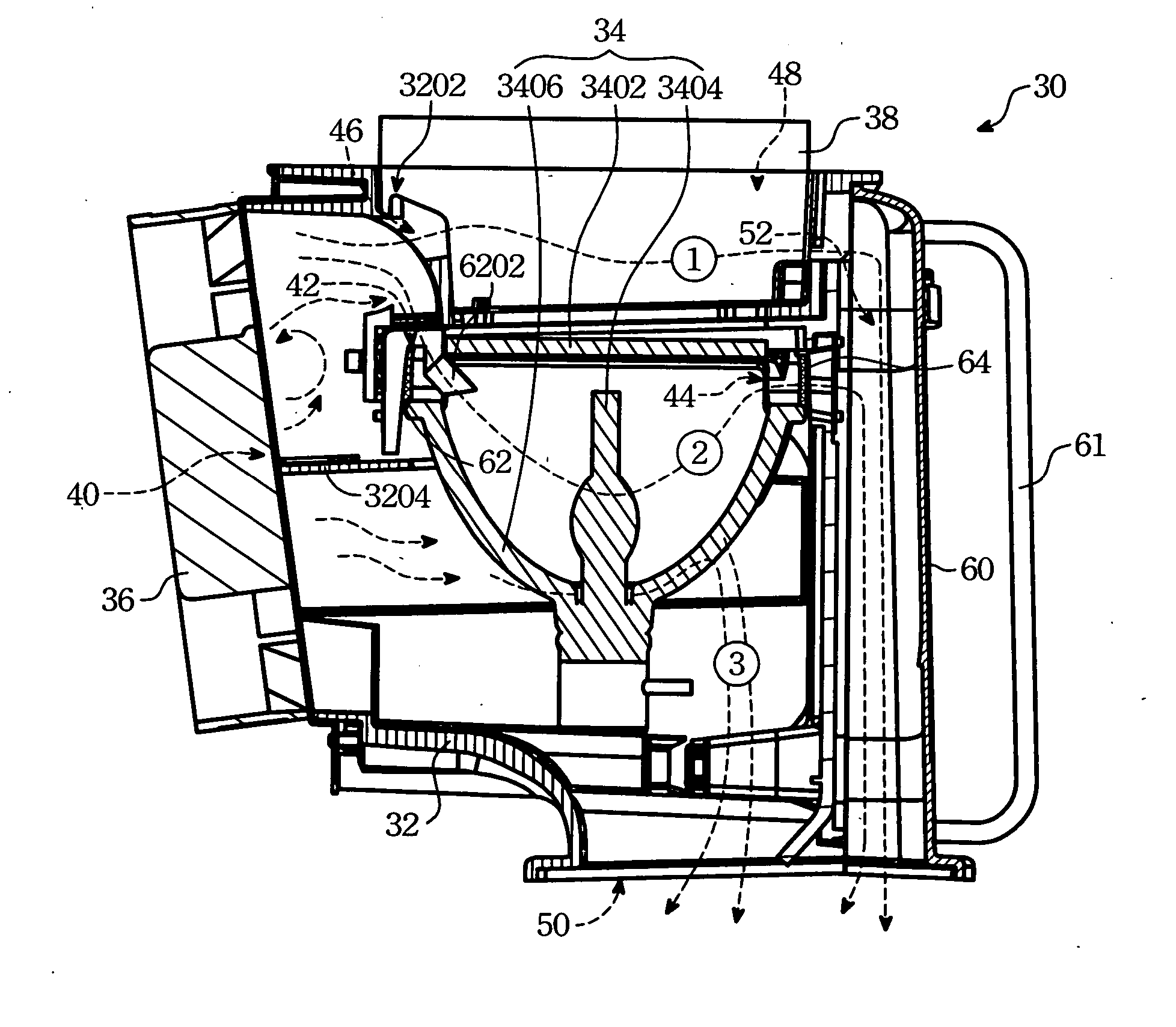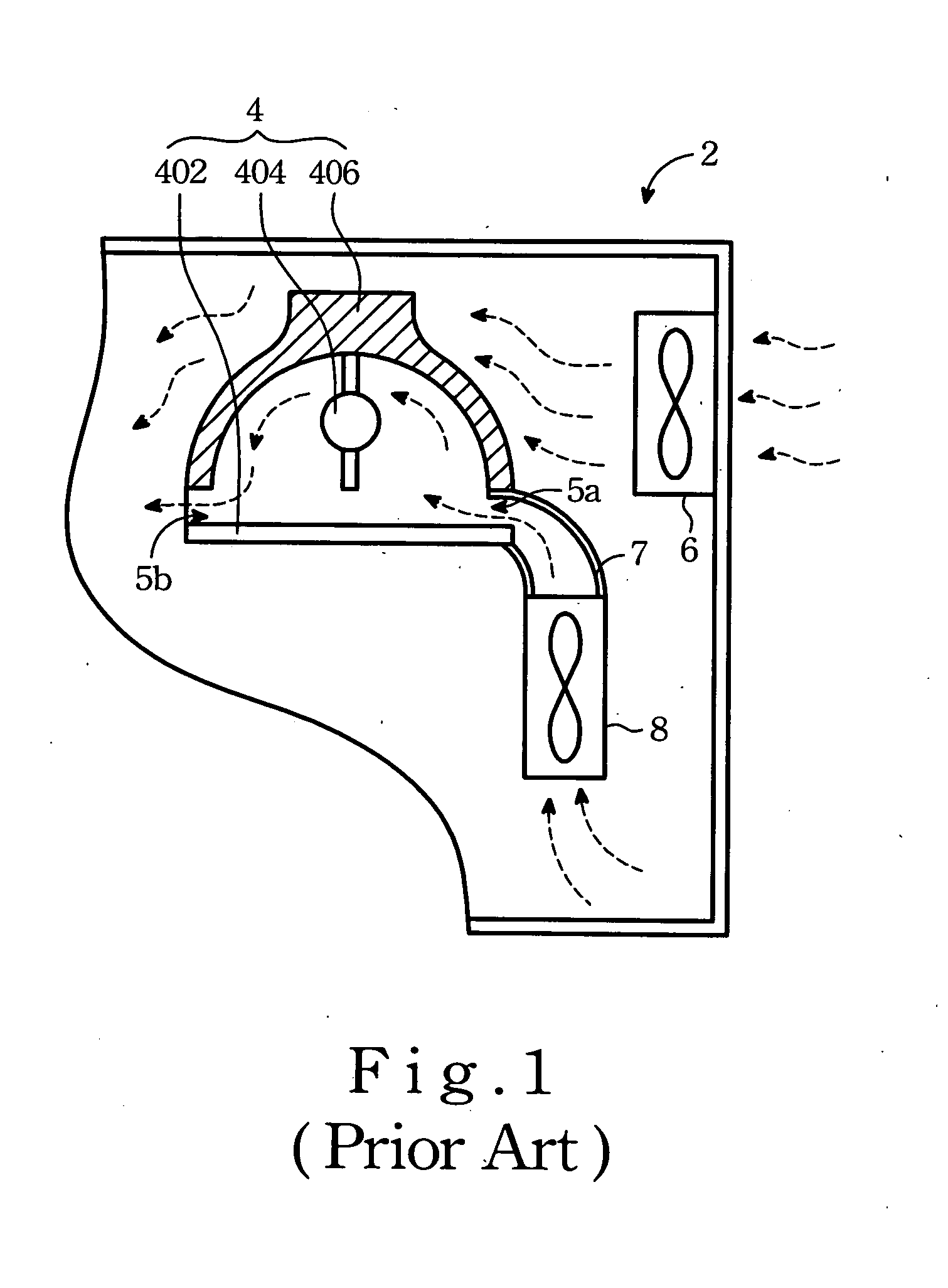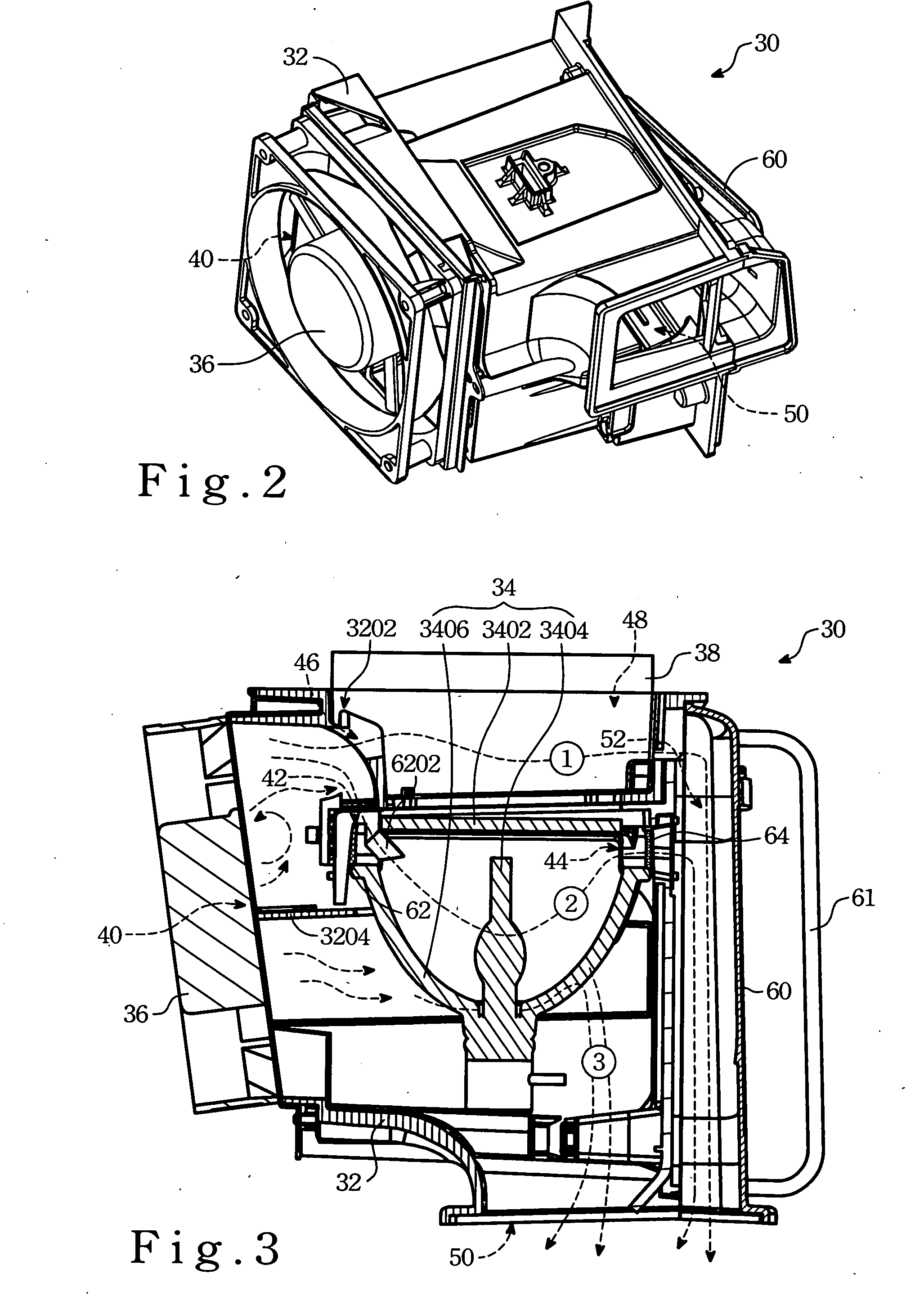Heat-dissipating device for a projection apparatus
- Summary
- Abstract
- Description
- Claims
- Application Information
AI Technical Summary
Benefits of technology
Problems solved by technology
Method used
Image
Examples
Embodiment Construction
[0018]FIG. 2 is a perspective view of the heat-dissipating device 30 of the present invention and is used in a projection apparatus (not shown) in order to lower the intensive heat (temperature) caused by a lamp unit due to operation of the apparatus.
[0019]FIG. 3 is a top sectional view of the heat-dissipating device of the present invention, and includes a receptacle body 32, a lamp unit 34, a fan unit 36, a nozzle 3202 and an air guide partition 3204.
[0020] The receptacle body 32 has a lateral left wall formed with a left air vent 40. The lamp unit 34 is disposed in the receptacle body 32, and includes a burner 3404, a generally concave reflector 3406 surrounding the burner 3404, and a glass plate 3402 disposed in front of the reflector 3406. The reflector 3406 cooperates with the glass plate 3402 to define an air inlet 42 adjacent to the left air vent 40 and an air outlet 44 spaced from the left air vent 40.
[0021] The fan unit 36 (preferable an axial fan) is mounted on the rec...
PUM
 Login to View More
Login to View More Abstract
Description
Claims
Application Information
 Login to View More
Login to View More - R&D
- Intellectual Property
- Life Sciences
- Materials
- Tech Scout
- Unparalleled Data Quality
- Higher Quality Content
- 60% Fewer Hallucinations
Browse by: Latest US Patents, China's latest patents, Technical Efficacy Thesaurus, Application Domain, Technology Topic, Popular Technical Reports.
© 2025 PatSnap. All rights reserved.Legal|Privacy policy|Modern Slavery Act Transparency Statement|Sitemap|About US| Contact US: help@patsnap.com



